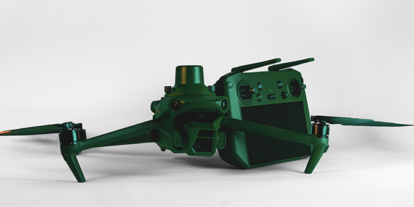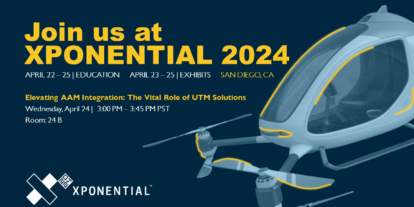Good news! You can get your daylight waiver in 1 week!
We know this because we went through this process and received our 107.29 waiver 6 days after submission, for all of US Class G airspace, valid for 4 years. So, it is possible to write an application for a 107.29 waiver enabling commercial operations at night, send it to the FAA, and get your approved Certificate of Waiver within 1 week.
Why would you want to fly at night?
There are many reasons to fly your drone at night, but regardless of your reasons, you cannot operate a drone commercially at night without a 107.29 night waiver.
It is often easier to see the drone and avoid flying over people or near manned aircraft since fewer flights occur at night. You might be in an industry where you don’t get to control when it is time to operate or you have profitable yet time-sensitive operations (e.g. media, security, insurance, inspection, construction, or drone delivery.)
You might also want to operate away from the prying eyes of the public for one reason or another.
Top Tips For Getting Your Waiver Approved
80% of daylight waivers are denied. Here are the biggest stumbling points to avoid:
-
Make sure you’ve completely filled out your application – give them as much information as possible…
The most common reason for rejection is that the applicant has not sufficiently explained how their proposed operation can be safely conducted despite it being at night.
If you don’t include any information on how you plan to conduct your operation safely, your application will likely be put immediately in the DENIED bin. The FAA still receives applications stating only that “I would like to fly my drone at night” – it is safe to assume all of those are immediately denied.
-
Empathize with your reader. They don’t know you or your proficiency with drones. Put them at ease…
Make it easy for the application reader to say yes! Make it as easy as possible to check all of their boxes and get into the details of your application. Don’t give them any reason to deny your application for not following directions or leaving out information.
The FAA’s mantra is “Give us your safety case, not your business plan.” As with any application, it is a good idea to put yourself in the shoes of the person who will be reading your submission and give them what they’re looking for.
-
Your application is not a negotiation. The only responses you’re likely to get from the FAA are an acceptance, denial, or more questions. Ask for what you need!
The FAA has repeatedly stated that your waiver application is not a negotiation. Don’t ask for permission to do things far above and beyond what you plan to do thinking that the FAA will come back with more reasonable suggestions. They will not. They will most likely deny your application and ask you to re-submit.
The system is designed to work by you submitting what you plan to do and the FAA tells you whether or not, based on the description of the operation and safety measures used, you are legally allowed to operate outside of Part 107’s rule only allowing daylight operations.
-
Understand risk mitigation. Precisely how will you make the operation safe?
Risk mitigation is a straightforward concept. You need to think about the risks you will encounter, demonstrate that you have thought about these risks, and detail the means by which you will make the proposed operation safe.
It is not enough to say, “We will avoid doing this”, you need to detail exactly HOW you will follow the rules, how you will use safety measures, and why that will make the operation as safe as it would be if it were flown during daylight.
-
What risks do you need to mitigate for 107.29? How did we do it?
In our waiver application, we thought through every detail of our operation, noting any potential risks in our proposed operation and how we could make it safer. Some examples:
- Reduced visibility – Night flight is riskier because it is more difficult to maintain visual contact with the aircraft in darkness. We mitigate this risk by mounting small but powerful strobe lights onto our aircraft which are visible up to 3 miles away.
- Inexperience at night – Night flight is riskier because it is more difficult for the brain and eyes to process information in darkness. One method for mitigation is to make sure participants know how darkness will affect them and are trained to compensate.
- Separation from the public – To mark our launch/land zone and make it safe from intrusion from non-participants, we used cones at a specific distance away. To manage the risks complexity of the operation, we required a Visual Observer for all night operations.
Download our *Accepted and Completed 107.29 Part 107 Night Waiver Application* here.
Andrew Elefant
Andrew Elefant is the Director of Legal & Policy at Aloft, an enterprise drone software company. Andrew is a licensed attorney in California. He is also an experienced Private Pilot with Instrument and Multi-Engine ratings, as well as a certificated Remote Pilot.



